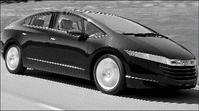Paul Messam, Gleaner Writer
Driving, especially out in the countryside, should be a relaxing experience.
Driving should be viewed upon as an enjoyable and stimulating challenge to both mind and body. And so much of our culture revolves around a motor vehicle. However, when one slides behind the steering wheel, one may encounter many stressful situations.
Stop-and-go traffic, weekly increases in petrol price, traffic slowing to a crawl, road rage, laid-back drivers to aggressive ones - all add to a stressful journey.
Valentinia D'Urso, a psychology Tutor at Padua University in Italy, once made the point that rage is an ever-increasing phenomenon in the society and produces negative effects on the body. He said that when the muscles tense, the heart beat and breathing speed up, then the body enters into a state of stress.
burnout is not stress
Raquel McCarthy, counselling psychologist, describes stress as the excitement or feelings of anxiety and tension that occur when demands placed on an individual exceed their ability to cope. She explains that burnout should not be confused with stress. "Burnout occurs when constant levels of high stress produce feelings of hopelessness, powerlessness, resentment and failure."
Ms McCarthy also explains that there is episodic acute stress where the person's life feels disorderly in lasting crisis, chaotic or out of control. This will happen if the driver, for example, is always rushing and late, takes on too much and has too many things to do; is short-tempered, anxious or tense most times. According to McCarthy, there is chronic stress where there is unrelenting demands and pressures for seemingly unending periods of time.
stress categories
It is of paramount importance for motorists to be fully aware of some of the major causes of stress. Aside from physical and mental/emotional activities, stress falls into three categories:
Psychological: Life changes, overload, frustration, deprivation (no money, no food).
External: Occupation (too much work, no job, not employable; noise (sounds of gunshot and loud music); nutrition, drugs and environment (violence insecurity) unpredictable events.
Personality: Self-perception, anxiety, reactivity, urgency, need for control, anger and hostility.
"Dr Hame Persaud in his book, A Renewed You, posits that physical illness, injury or fatigue may reduce the individual's resistance to psychological stress. He explained that anyone can break down with these stresses, for example, continued warfare, civil life problems, personal, social sexual difficulties, fear, guilt, hate, which are repressed - thus causing the individual to be weakened.
In its positive arena, stress can help one to concentrate and perform when the challenges are realised, and so make use of the time to relax and respect and appreciate one's achievements. Equally, stress becomes negative when the person remains in the 'geared up' mode and simply cannot relax after meeting the particular challenge.
A stress management plan for motorists
1. Motorists should, for their own safety, seek to recognise any stress sign or signal before hitting the road.
2. Try to have confidence in yourself.
3. Be as organised, and prioritise, as much as possible.
4. Do not feel afraid to ask for help; the person who knows not that he knows not is a 'big fat road fool'.
5. Make your pre-trip inspection top priority before engaging your engine.
6. Endeavour to comprehend the source of your stress. Is it a who, what, where, or why?
7. Once the motorist has found out the great source of stress, carefully avoid that source.
8. If and when the prime stressor cannot be avoided, or even modified, simply choose the best alternative.
9. As a motorist, anticipate occurrences and prepare for them.
10. If and when a crisis or near crisis occurs, keep calm, keep a cool head; sometimes count to 10. Manage cash for repairs wisely.
11. One writer reminds us that "Laughter is like wine to the soul". Even under trying circumstances maintain a sense of good, clean, humour.
12. Make it a way of life to maintain good relationship with drivers and people generally around you.

